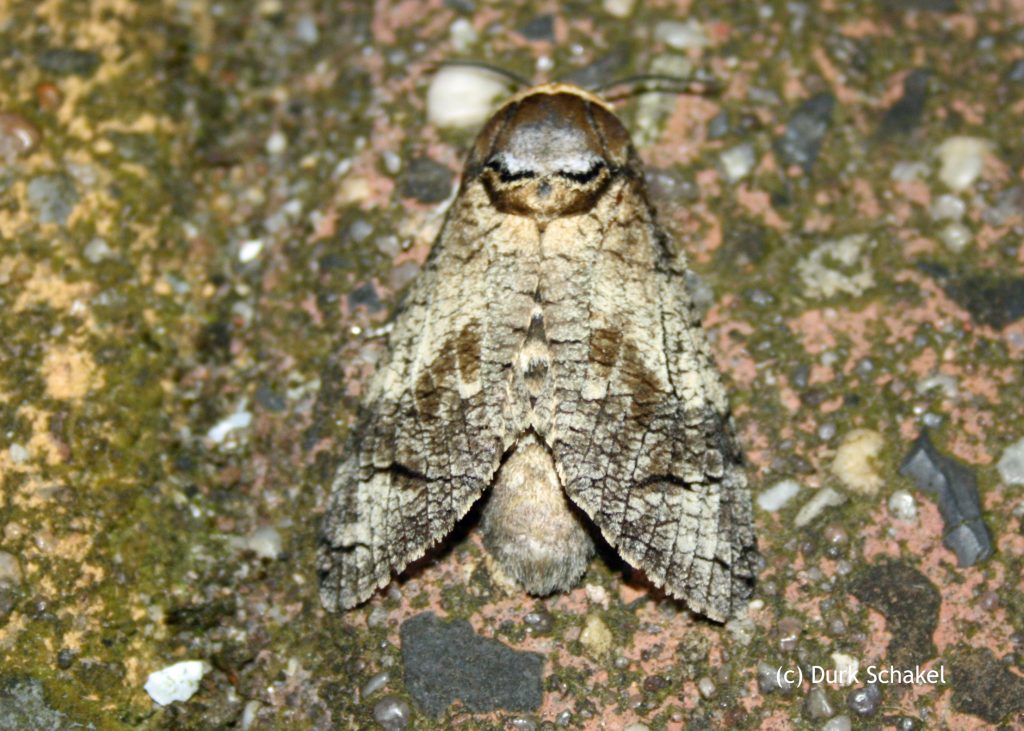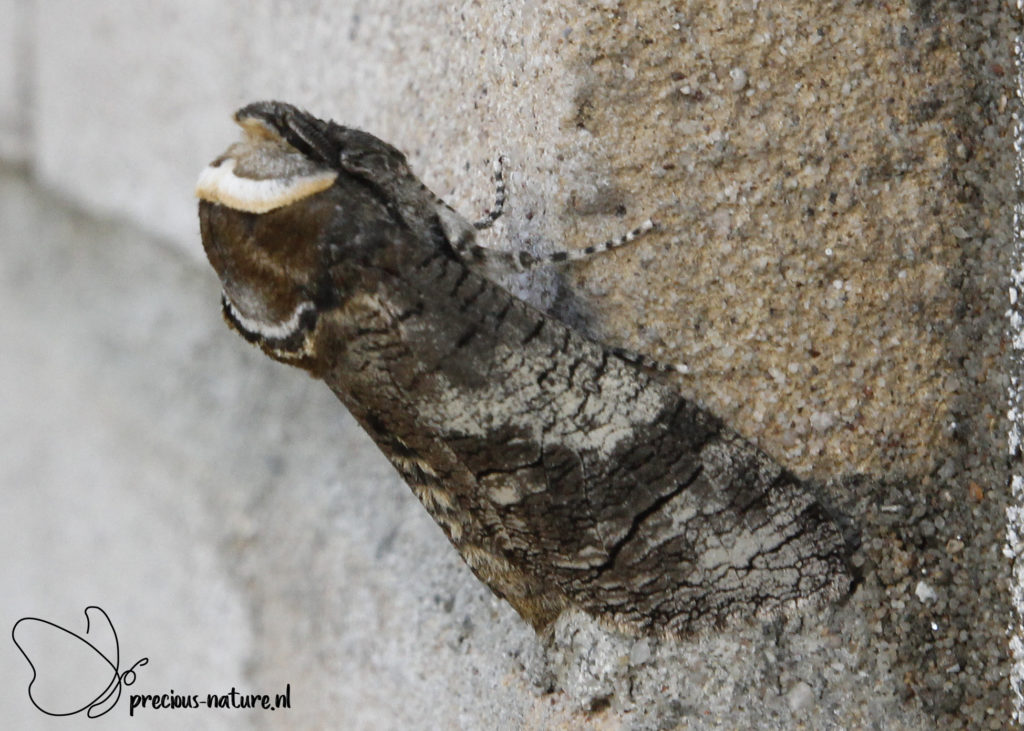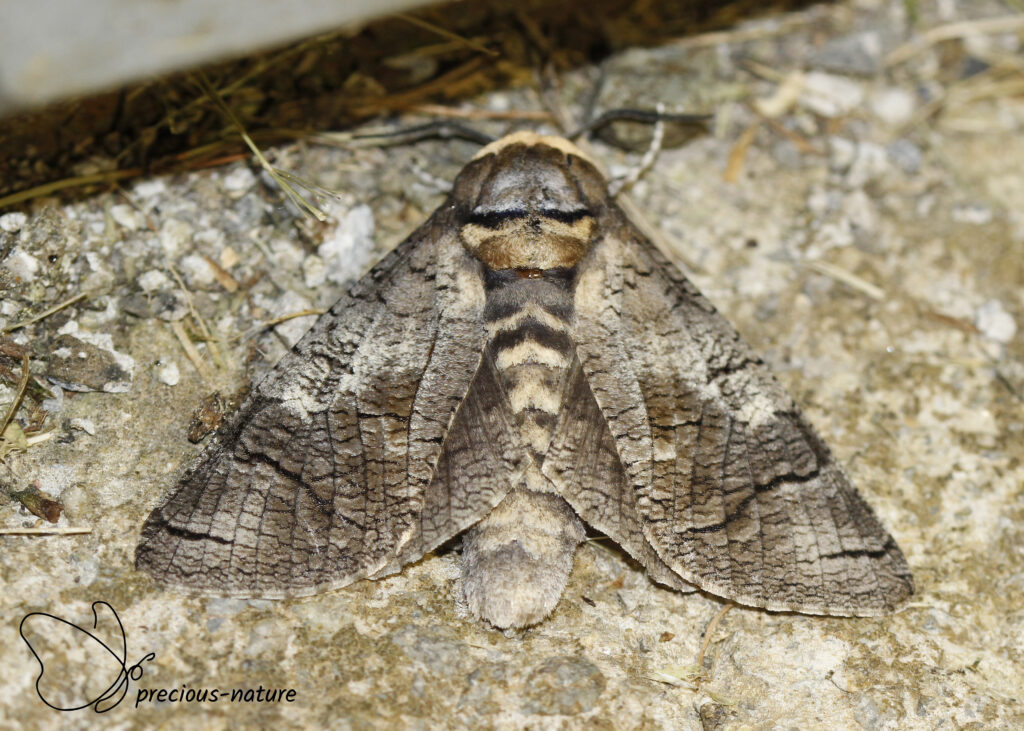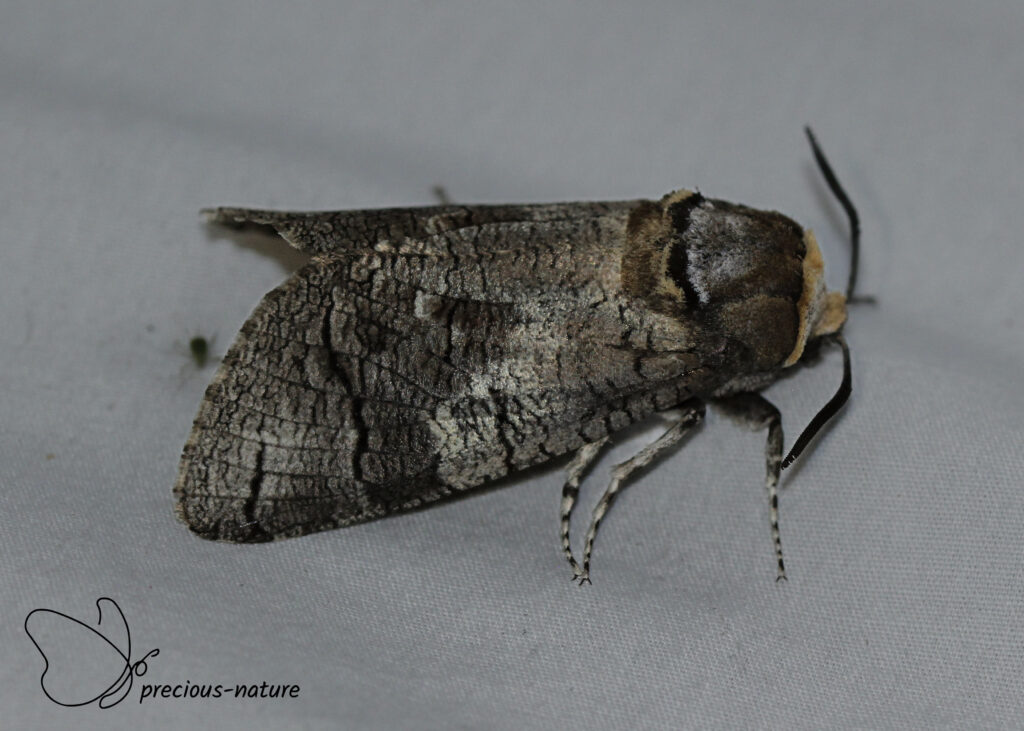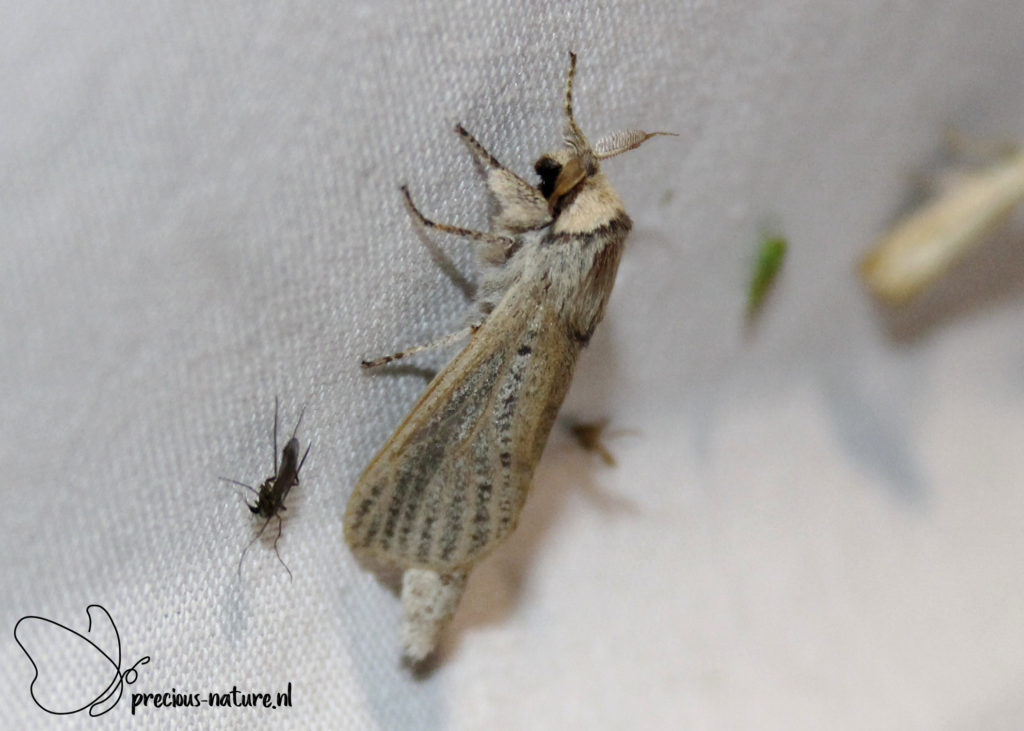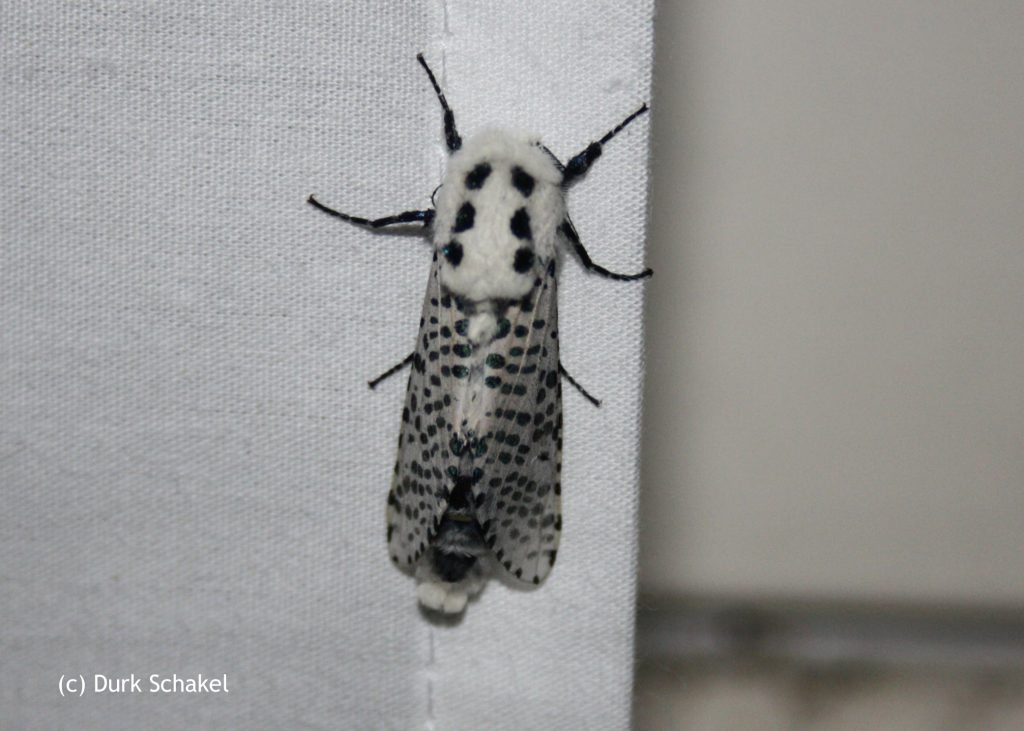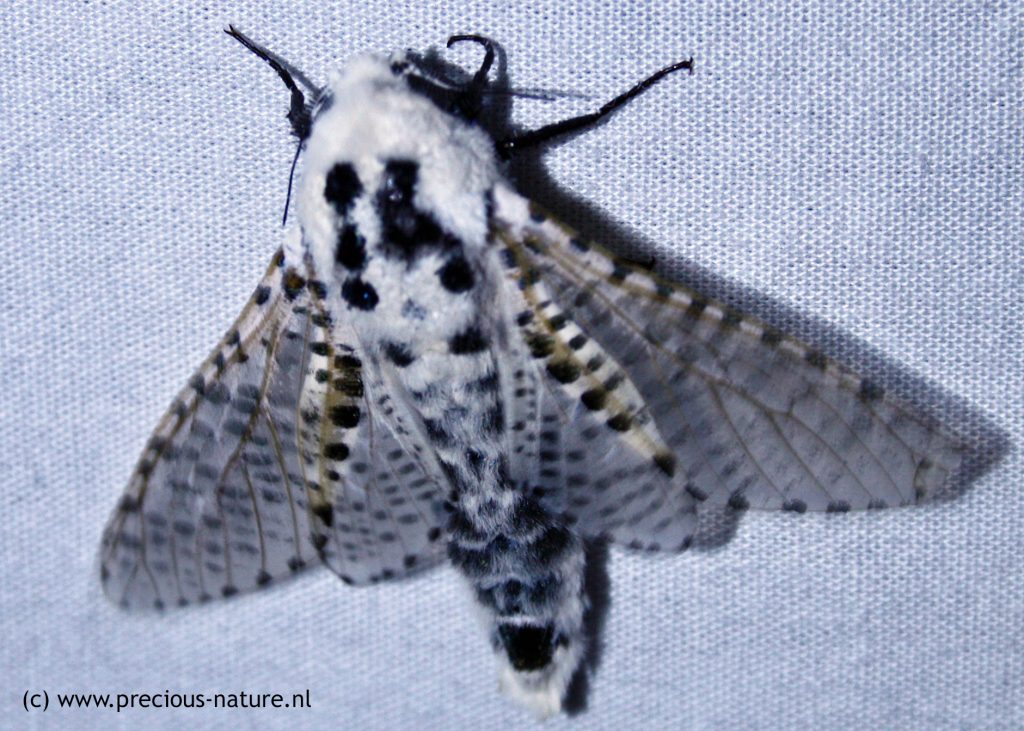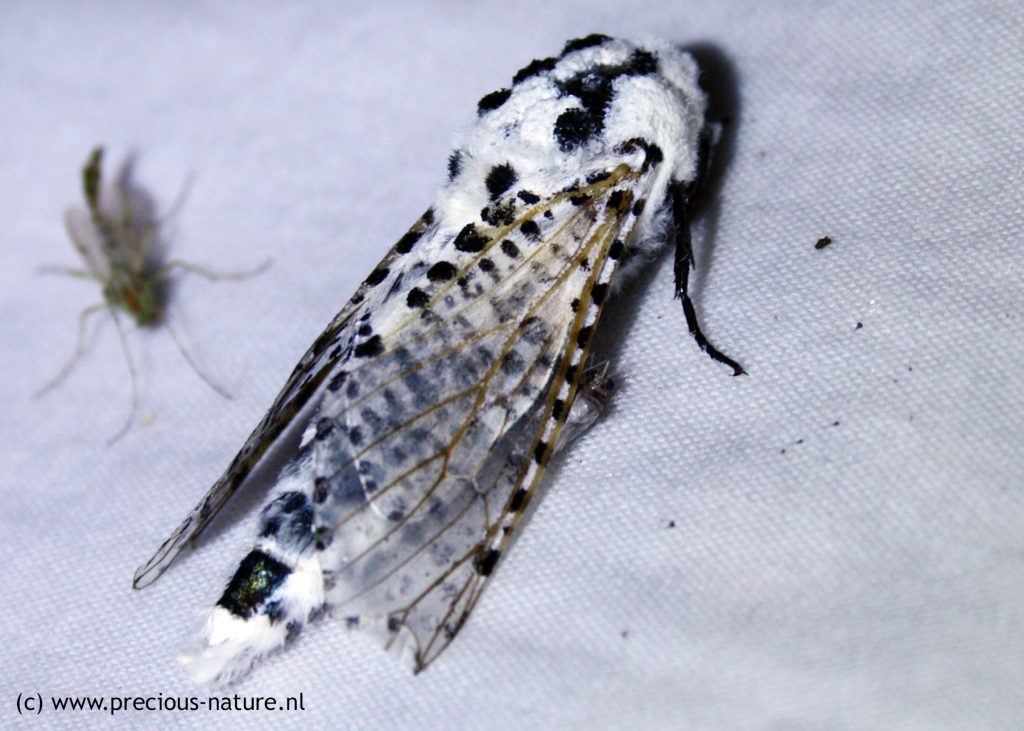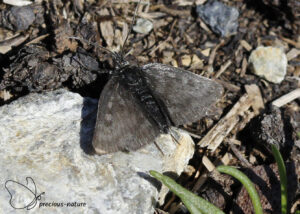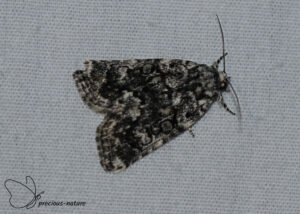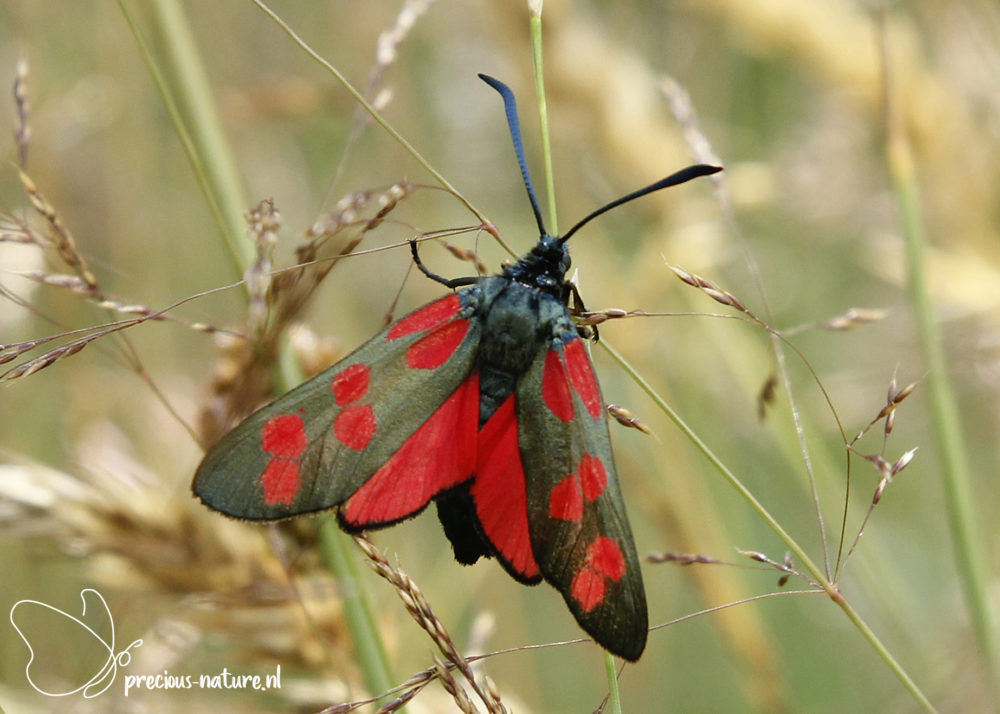Carpenter and Leopard Moths (Cossidae) are a group of moths of which only three different species occur in the Netherlands. They are a beautiful species and a pleasure to see when you lure them onto the white sheet with a special lamp. The wings are elongated and are held vertically against the body in a resting position. They are fairly large moths, ranging from 15 to 42 mm. The fact that the caterpillars live in wood does justify the name “carpenters”. The fact that the caterpillars hibernate twice, up to four times, before pupating was new to me.
Subfamily: Cossulinae
Genus: Cossus
Goat Moth – 2017 (NL)
(NCBI-index: 753294)
The Goat Moth (Cossus cossus) is a beautiful, large insect with a distinctive appearance because of the drawing on the chest piece. It seems as if you see the face of a sleeping owl because of the white spot and the two black stripes underneath. Maybe others see it more like a goat. The upper side of the wing looks like tree bark with its brown tones and small, thin, black lines. The males are often attracted to light, but the females are not so easy to lure. The flying period spans one generation, from May to September, and the wingspan ranges from 65 to 80 mm. Host plant: Oak, Willow, Birch, Poplar. Dutch name: Wilgenhoutrups. Frisian name: Wylgehoutflinter.
Flying period:

Subfamily: Zeuzerinae
Genus: Phragmataecia
Reed Leopard – 2020 (NL)
(NCBI-index: 753407)
With the Reed Leopard (Phragmataecia castaneae), I have completed all family species in the Netherlands. The most special thing about this leopard moth is that the abdomen protrudes far behind the rounded wings when resting, and this is more extreme in the female. There is only a black speckling on the slightly translucent light yellow wings. The wingspan is 30-46 mm, and the flight period runs from May to August in one generation. Host plant: Common Reed. Dutch name: Rietluipaard. Frisian name: Reidloaihoars.
Flying period:

Subfamily: Zeuzerinae
Genus: Zeuzera
Leopard Moth – 2017 (NL)
(NCBI-index: 1101072)
The Leopard Moth (Zeuzera pyrina), also called Mourning Moth, lives up to its English name more than the Dutch one. The wings are white and translucent with black spots. You can see six black spots on the thorax in two parallel rows on the white body. The wing is transparent, and you can see brown veins. When I saw this moth attracted to the UV light, I was really surprised that this moth flies around in my garden at night. The wingspan is 44-70 mm. The flying period is one generation, from May to September. Host plant: Blackthorn, Plum, Hawthorn, Apple, Pear, Privet, Ash, Elms, Oak, Beech. Dutch name: Gestippelde houtvlinder. Frisian name: Stippelflinter.
Flying period:


